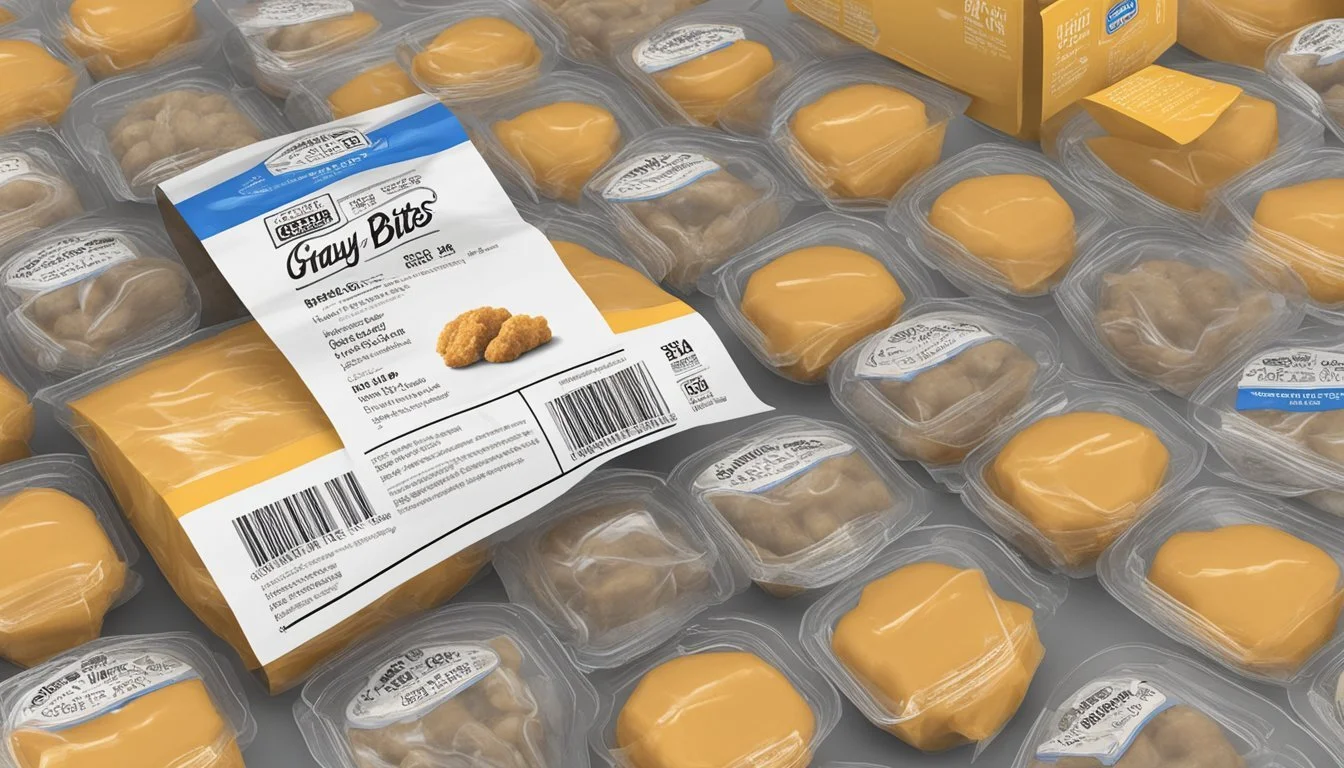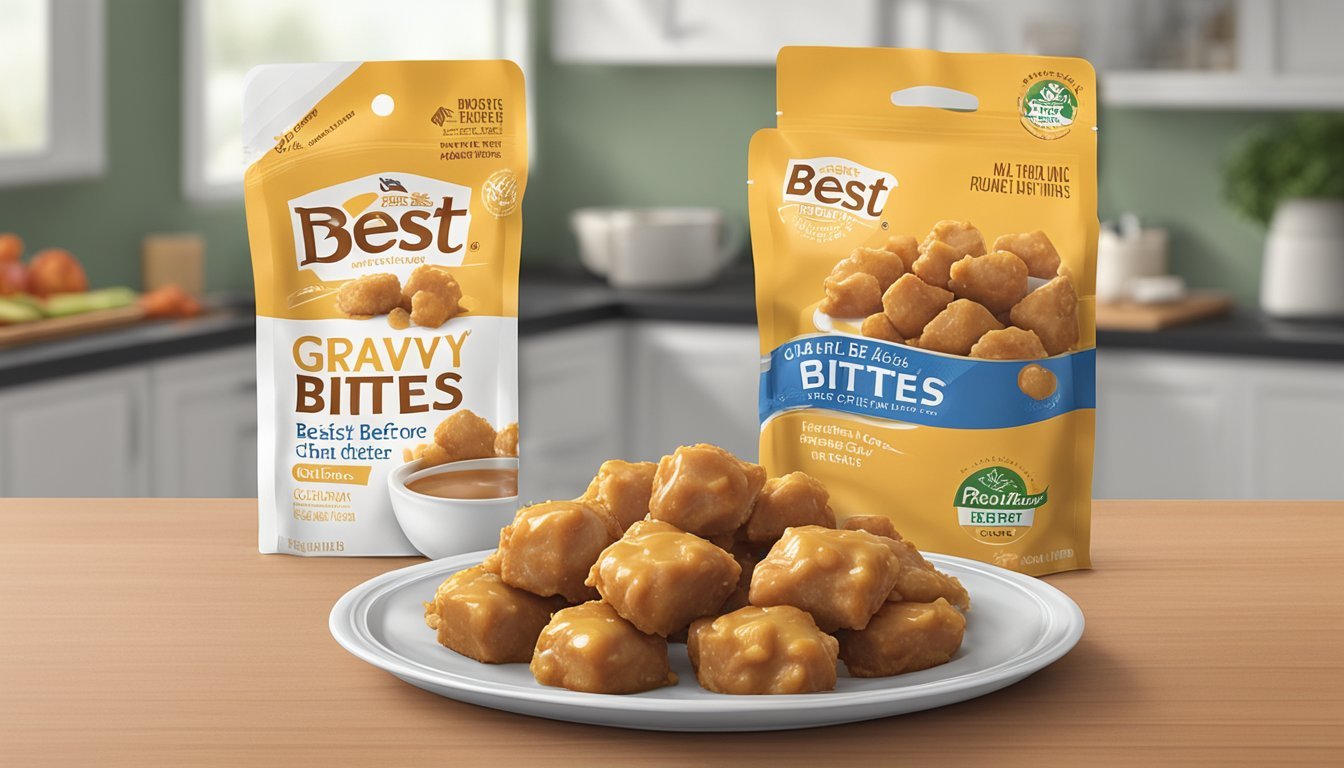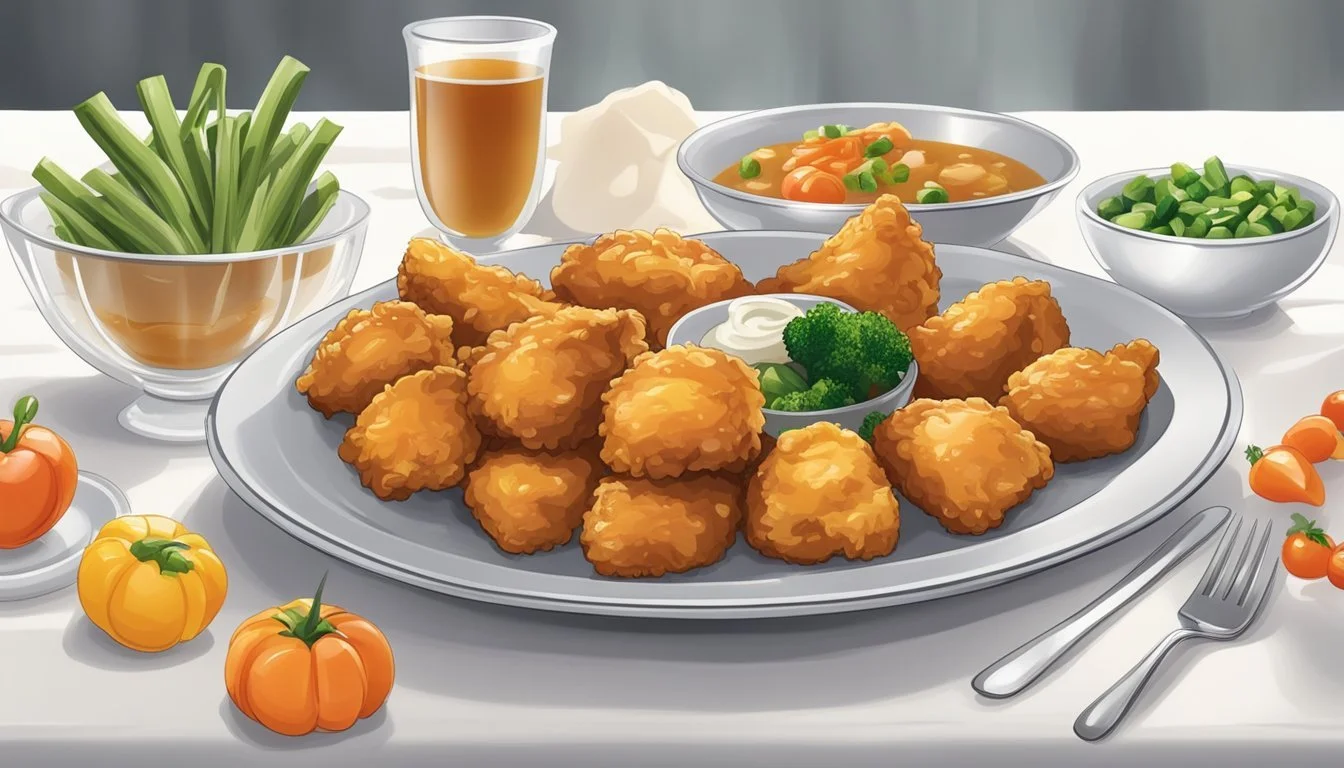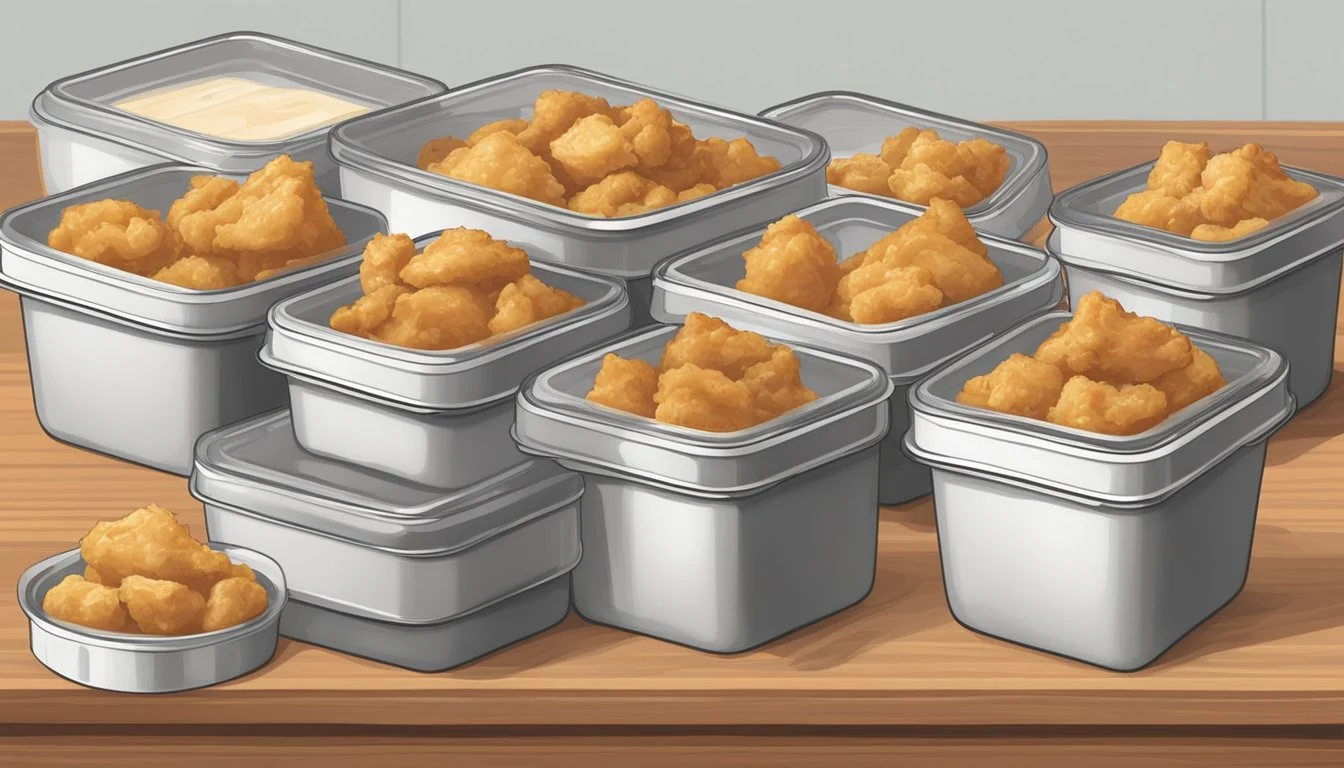How Long Do Chicken and Gravy Bites Last?
Storage Tips and Shelf Life
Chicken and gravy bites are a delicious and convenient snack that many people love to have on hand. When stored properly, these bites can last in the refrigerator for about three to four days. For longer storage, placing them in the freezer is viable, where they can remain good for up to four to six months without losing quality.
To maximize their shelf life, ensure that chicken and gravy bites are kept in airtight containers. This prevents contamination and helps maintain their freshness. Proper storage conditions, such as keeping them in a cool, dark place, are crucial for unopened packages.
Understanding the shelf life of chicken and gravy bites is essential for safe consumption. By adhering to recommended storage practices, these tasty bites will stay enjoyable and safe to eat for longer periods.
Understanding Chicken and Gravy Bites
Chicken and gravy bites are a delightful combination of flavorful and tender chicken chunks, coated in a rich, savory gravy.
These bites are typically composed of pieces of chicken, often seasoned with salt, pepper, and various spices. The meat used may vary, but boneless, skinless chicken breasts or thighs are common choices.
Ingredients and Preparation
Chicken: Boneless, skinless chicken breasts or thighs
Gravy Mix: Often made with broth, cornstarch, or flour, and spices
Seasonings: Salt, pepper, garlic, onion powder, and sometimes paprika
Homemade versions often involve browning the chicken in a skillet before adding a homemade gravy made from pan drippings, broth, and thickening agents like flour or cornstarch.
Flavor and Texture
The flavor of chicken and gravy bites is rich and comforting. The chicken becomes tender and juicy, absorbing the savory essence of the gravy.
The texture varies depending on the cooking method. Slow-cooked bites tend to be softer, while skillet-cooked bites might have a slight crispiness from browning.
Nutritional Information
The nutritional content of chicken and gravy bites depends heavily on the ingredients used. Chicken is a good source of protein and relatively low in fat, especially if using chicken breast.
The gravy, depending on its preparation, can add more calories and fat, particularly if made with butter or cream.
Versatility
Chicken and gravy bites are versatile and can be served with various sides such as mashed potatoes, rice, or vegetables.
They can be a part of a weeknight dinner or made in larger batches for gatherings and events.
Understanding the makeup of chicken and gravy bites involves recognizing the balance between the tender meat and the rich gravy, as well as the potential for various flavor profiles and textures.
Storage Basics
Proper storage is essential to maintain the freshness and safety of chicken and gravy bites. Focus on choosing the right storage conditions and containers to maximize shelf life.
Proper Storage Conditions
Chicken and gravy bites should be refrigerated within two hours of preparation. This helps prevent bacterial growth. Refrigerate chicken bites in an airtight container to keep them fresh for up to 3-4 days.
For extended storage, freezing is an option. Use freezer-safe containers or aluminum foil to wrap the bites, which can keep them fresh for up to 2-3 months in the freezer. Label containers with the date of storage to track freshness.
Choosing Containers for Storage
Choosing the right container is crucial for preserving the quality of chicken and gravy bites. Opt for airtight containers to prevent moisture and airborne contaminants from reaching the food.
Glass containers are excellent for both refrigeration and freezing as they do not leach chemicals. Plastic containers can also be used but ensure they are BPA-free and freezer-safe.
For short-term storage, use aluminum foil to wrap individual bites, making them easy to reheat. Label all containers or wraps with the date to keep track of storage times.
Refrigeration and Shelf Life
Proper refrigeration and keen attention to signs of spoilage are crucial for maintaining the quality and safety of chicken and gravy bites. Understanding how to properly store these bites can help you avoid foodborne illnesses.
Refrigeration Guidelines
Refrigeration is essential for extending the shelf life of chicken and gravy bites. Store these bites in an airtight container to prevent contamination.
Ensure your fridge is set at a temperature of 40°F (4°C) or below. This temperature helps slow the growth of bacteria.
For optimal safety, consume refrigerated chicken and gravy bites within three to four days.
If the bites contain dairy or meat, it's better to consume them within one to two days.
Detecting Spoilage
Look for tell-tale signs of spoilage such as unpleasant odors, changes in texture, and discoloration. Spoiled chicken and gravy bites might emit a sour or rancid smell.
Mold growth is another clear indicator of spoilage. Notice any slimy or fuzzy patches on the bites?
Do not taste test suspicious bites; trust your senses.
Always prioritize food safety to avoid health risks.
Shelf Life and Expiration Dates
Store-bought chicken and gravy bites often come with an expiration date. This date indicates how long the product is expected to remain at peak quality.
Even if preserved, these bites should be consumed within a few days of opening.
Freezing unused portions can extend their longevity, keeping them safe for up to six months when properly stored in a freezer-safe container.
Remember to label frozen bites with the freeze date to keep track. Proper handling and storage ensure that your chicken and gravy bites stay safe to eat.
Freezing Chicken and Gravy Bites
Chicken and gravy bites, when properly frozen, can maintain their taste and texture for several months. Key aspects include the techniques used to freeze them, safe thawing methods, and understanding how long they can be stored without losing quality.
Freezing Techniques
To freeze chicken and gravy bites effectively, start by ensuring they are completely cooled to room temperature. This helps prevent ice crystals from forming inside the bites.
Place the chicken and gravy bites on a baking sheet lined with parchment paper, ensuring they are not touching each other. Freeze them until they are solid.
Transfer the frozen bites to airtight containers or heavy-duty freezer bags to prevent freezer burn. Label the containers with the date of freezing for easy tracking.
Thawing Safely
To thaw frozen chicken and gravy bites safely, transfer them from the freezer to the refrigerator. Allow them to thaw slowly over 24 hours.
Alternatively, for quicker thawing, place the bites in a sealed bag and submerge in cold water, changing the water every 30 minutes. Avoid leaving the bites at room temperature to reduce the risk of bacterial growth.
Once thawed, the bites should be reheated to an internal temperature of 165°F (74°C) to ensure they are safe to consume.
Freezer Storage Duration
The duration for which chicken and gravy bites can be stored in the freezer depends on maintaining the correct temperature. Store the bites at 0°F (-18°C) or below to ensure optimal quality and safety.
For best taste and texture, consume homemade chicken and gravy bites within 3 months. Pre-packaged, commercially frozen bites may last up to 6 months, as they often have preservatives that extend shelf life.
Storing bites longer than these recommended periods could lead to a decline in taste and texture, although they may still be safe to eat if properly stored.
Reheating for Best Quality
Reheating chicken and gravy bites to achieve the best quality involves using proper methods and ensuring food safety. Following these guidelines can help maintain the flavor and texture while avoiding any potential foodborne illnesses.
Reheating Methods
One effective way to reheat chicken and gravy bites is using an oven. Preheat the oven to 350°F (175°C). Place the bites on a baking sheet, cover with foil to prevent drying out, and heat for about 20 minutes until they reach an internal temperature of 165°F (74°C).
Another convenient method is the microwave. Arrange the bites on a microwave-safe plate, cover with a microwave lid or damp paper towel to retain moisture, and heat on medium power in 1-minute intervals until they are thoroughly heated. Stir or rotate the bites halfway through to ensure even heating.
A stovetop can also be used. Heat a non-stick pan over medium heat, add a small amount of chicken stock or water, and reheat the bites until they are hot, ensuring they don't stick or burn.
Maintaining Quality and Safety
Proper storage of chicken and gravy bites is crucial to maintain their quality. They should be stored in an airtight container in the refrigerator and consumed within 2-3 days.
Ensuring an internal temperature of 165°F (74°C) when reheating is vital to kill any bacteria that may cause foodborne illnesses. Using a food thermometer can help achieve accurate measurements.
It is critical to avoid repeated reheating. Only reheat what will be consumed immediately to prevent degradation of texture and flavor.
Thawing properly, if the bites were frozen, can also affect reheating quality. Always thaw them in the refrigerator rather than at room temperature to keep them out of the danger zone where bacteria can thrive.
By following these practices, you can enjoy chicken and gravy bites that taste nearly as good as when they were first made.
Cooking and Recipe Tips
Preparing delicious chicken and gravy bites requires attention to several key aspects, such as making the gravy from scratch, adjusting its consistency, and using the right seasonings to enhance the flavor.
Preparing Chicken and Gravy from Scratch
Creating homemade chicken gravy from scratch provides a rich and authentic flavor. Start by sautéing garlic and onion in butter or olive oil until fragrant. Add flour to create a roux, stirring until it turns golden brown. Gradually whisk in chicken broth while maintaining a smooth texture. Simmer the mixture until it thickens, then add cooked chicken bites. This method ensures the gravy is well integrated with the chicken, producing a cohesive dish.
Adjusting Gravy Consistency
The consistency of the gravy is essential for a perfect dish. If the gravy is too thin, dissolve a small amount of cornstarch or flour in cold water and gradually add it to the gravy, stirring continuously. Alternatively, if the gravy is too thick, add more chicken broth until the desired consistency is achieved. Adjustments should be made incrementally to avoid over-thickening or thinning. Precision during this step ensures a well-balanced texture that complements the chicken bites.
Seasoning for Enhanced Flavor
Seasonings are crucial for enhancing the flavor of chicken and gravy bites. Use a combination of salt, black pepper, garlic powder, onion powder, and paprika. For a smokier taste, consider adding smoked paprika. These seasonings should be added gradually, allowing you to taste and adjust as needed. Fresh herbs like thyme or rosemary can also be added for an additional layer of flavor. Proper seasoning elevates the dish, making it flavorful and satisfying.
Packaging and Labeling
Proper packaging and clear labeling are essential to ensure the safety and longevity of chicken and gravy bites. This section explains how commercial packaging differs from homemade storage.
Commercial Packaging and Labels
Store-bought chicken and gravy bites typically have a sealed, airtight package that helps preserve freshness. Such packaging may include cans, pouches, or vacuum-sealed containers. These packages often feature a "best by" or "expiry date" to indicate peak quality.
The labels provide important information, including ingredients, nutritional facts, and storage instructions. For example, unopened canned bites might last up to 2 years if stored in a cool, dry place. It's crucial to check for any damage to the packaging, such as dents or tears, which can compromise the product's shelf life.
Labeling Homemade Bites for Storage
When making chicken and gravy bites at home, proper labeling is equally important. Use airtight containers or freezer bags to store the bites, ensuring they are refrigerated or frozen shortly after preparation.
Clearly marking the date of preparation on the labels helps in monitoring freshness. Recommended storage durations are typically up to 4 days when refrigerated and up to 3 months if frozen. Be mindful of any "best before" dates you set, and discard any bites if they appear spoiled or have an off smell.
Health and Safety Considerations
When storing and consuming chicken and gravy bites, it is crucial to focus on food safety to prevent spoilage and allergic reactions. Proper storage is key to ensuring these bites remain safe to eat, while knowledge of dietary restrictions can help avoid adverse reactions.
Preventing Bacterial Growth
Chicken and gravy bites must be stored correctly to prevent bacterial growth. Refrigerate leftovers within two hours of cooking, keeping them at a consistent temperature below 40°F (4°C).
Label containers with the date to track storage time. In a refrigerator, these bites can last up to 3-4 days. Freeze for longer storage, ideally up to 2-3 months, ensuring they are in airtight containers to prevent freezer burn.
Be cautious of cross-contamination by cleaning surfaces and utensils thoroughly after handling raw chicken. Symptoms of spoilage include off odors, a slimy texture, or discoloration. Always reheat leftovers to an internal temperature of 165°F (74°C) to kill any bacteria present.
Allergy and Dietary Information
Chicken and gravy bites typically contain common allergens like gluten and dairy. If serving at gatherings such as Thanksgiving dinner or in casseroles, consider guests’ allergies.
For vegetarian or vegan alternatives, replace chicken with plant-based proteins and use vegetarian gravy options free from animal products.
Check labels for preservatives or other additives that some individuals might react to. For example, those with celiac disease should look for gluten-free products. Always inform guests of ingredients used to prevent allergic reactions and ensure everyone can safely enjoy the meal.
Serving Suggestions
Chicken and gravy bites are versatile and pair well with various side dishes. They can be served with creamy mashed potatoes for a comforting meal. Mashed potatoes provide a smooth texture that complements the savory bites.
For a lighter option, serve them over cooked rice. Rice absorbs the gravy well, balancing flavors without overpowering the dish.
Consider adding tender turkey slices to your meal. This can provide variety and additional protein. Turkey pairs well with the rich flavors of chicken and gravy.
Use boneless skinless chicken breasts or chicken thighs to make the bites. These cuts yield juicy and tender results, perfectly matching with the gravy.
If you have leftovers, repurpose them creatively. Chicken and gravy bites can be added to a vegetable stir-fry or used as a filling for sandwiches.
Try placing them on a bed of seasoned rice. This can create a new and exciting meal from the previous day’s dish.
Advanced Storage Techniques
Proper storage techniques can significantly extend the freshness and safety of chicken and gravy bites, ensuring they remain a delicious component of your meal prep. One effective method involves vacuum sealing, which provides a longer shelf life and better quality preservation.
Vacuum Sealing for Extended Freshness
Vacuum sealing removes air from the storage bag, preventing oxidation and spoilage. This method is highly effective for preserving chicken and gravy bites by maintaining their texture and flavor.
To vacuum seal properly, ensure the chicken and gravy bites are cool and clean before packaging. Place the bites in a vacuum-sealable bag, removing as much air as possible before sealing.
Store the sealed bags in a cool, dry place like a pantry or freezer. For further protection against discoloration and contamination, consider using airtight containers in conjunction with vacuum sealing. This dual-layer approach can keep the bites fresh for months.
Regularly inspect the packages for any signs of leakage or discoloration, and always thaw frozen bites in the refrigerator to maintain food safety. Vacuum sealing is a valuable technique for anyone serious about meal prep and extending the shelf life of their food.












